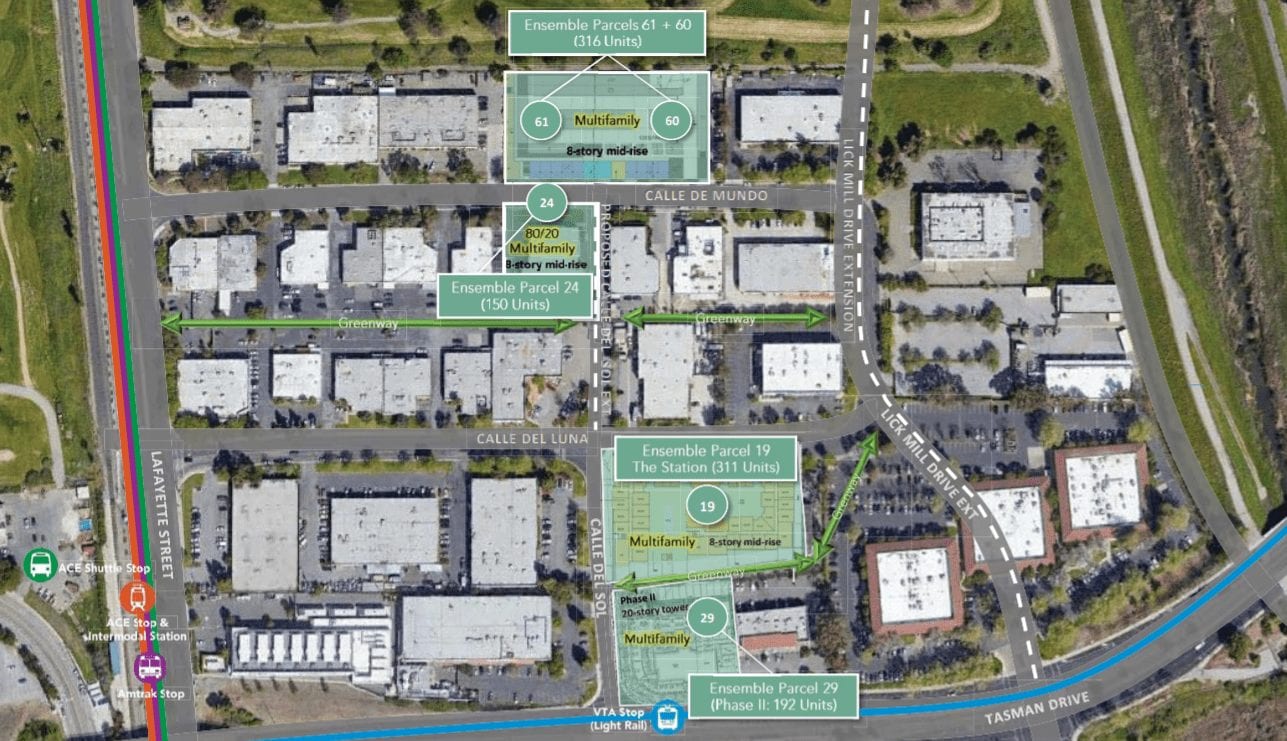Santa Clara officials on Tuesday night discussed details around a complex and long-anticipated project called Related Santa Clara — formerly known as CityPlace — and will bring back a potentially precedent-setting discussion on affordable housing in the city.
City councilmembers are expected to approve shuffling around some money for a traffic improvement funding plan for the 9.1 million-square-foot Related Santa Clara development under construction at 5151 Stars and Stripes Dr.

The traffic plan, known as the Multimodal Improvement Plan, outlines an estimated $23.4 million in improvements for the area around the sprawling development, which is set to rise on 240 acres that once served as a landfill. Of that cost, developer Related Cos. is expected to pay a majority: between $17.4 million and $20.1 million.
Santa Clara would pay the rest, which is expected to ring in between $3.3 million and about $5.98 million — but there is a caveat.
“The MIP costs were developed based on 2018 construction costs and are likely to increase over the life of the project and MIP,” city documents note.
That means the true amount the city may pay to make the improvements around what will become one of the largest developments in Silicon Valley is still ambiguous. More than half of the cost of the Multimodal Improvement Project would go toward bicycle and pedestrian facilities, about $2.6 million would be used for transit service enhancements and about $8 million would be spent to improve freeway and street operations.
Santa Clara’s expenses would primarily be funded from “outside sources,” including grants, Measure B and regional funds, according to city documents.
Meanwhile, government officials are still grappling with the complications of developing a mixed-use project with homes, retail, office space and hotel rooms on a former dumping grounds.
To help with those complications, officials on Tuesday also considered extending an existing contract with Robert E. Van Heuit, a consultant hired in 2015 to “provide technical advice and assistance” to the county’s Department of Environmental Health for the sprawling project.
“As a former landfill site, agencies lack the technical expertise necessary to review a complex project like Related Santa Clara,” city documents state.
Since 2015, the contract has been extended several times and Santa Clara lawmakers will now decide whether to extend the contract for another year and add $80,000 more to the total value, bringing the consulting costs to a maximum of $250,000.
Related will ultimately be paying the bill on the contract by giving advances to the city, according to city documents.
More housing units or lower-income housing?

City officials are rehashing a debate that started last month on whether or not to slash the number of affordable homes in a proposed development project to get apartment units that cater to lower-income populations.
Mayor Lisa Gillmor continued the discussion on the three-part, 969-unit development proposed in the city’s Tasman East neighborhood because she wanted to analyze the precedent the city would set.
“If we do this for this project, are we prepared to do it when the other developers come forward and ask for other projects? How does that affect our RHNA numbers?” she asked, referring to the state-mandated affordable housing goals set for each region.
ZAEN Partners, a limited liability company associated with Ensemble Development, has proposed the mixed-use development along Calle Del Sol and Calle Del Mundo with 969 residential units.
Under the city’s current rules, the developer is required to make 80 of those homes affordable to people earning 100 percent of the Area Median Income, which equates to rents at about $2,627 per month.
But Ensemble wants to slash the number of affordable apartments in its project by 50. In return, the developer has promised to make the remaining 30 units affordable to people earning 50 percent of the Area Median Income — or about $1,463 monthly. The developer would also pay an estimated $77,000 in affordable housing “in-lieu” fees.
City officials say the agreement is a win-win because homes for low-income residents, particularly those who earn less than the area’s median income, are challenging to get off the ground. There seems to be little worry from city officials about setting a precedent that will reduce the number of affordable homes built in the future.
“Based on the city’s current projected pipeline, there is likely to be an excess of moderate-income unit production relative to the RHNA requirement,” city documents note. “The current proposal … would help to address the potential deficit of very low (income) units relative to the RHNA requirement.”

Contact Janice Bitters at [email protected] or follow @JaniceBitters on Twitter.



Leave a Reply
You must be logged in to post a comment.